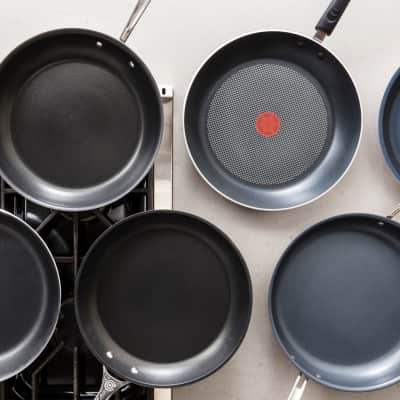We use nonstick skillets when we're cooking fish, eggs, and other delicate foods that are prone to sticking. We like both regular nonstick skillets coated with layers of a synthetic material that contains the chemical polytetrafluoroethylene (the most common brand name of which is Teflon) and ceramic nonstick skillets coated with a material derived from sand. They're incredibly useful, but their nonstick coatings can be easily damaged if you use the wrong tools or don't care for them properly. Here's how to keep your nonstick cookware looking and performing like new.
The Dos and Don'ts of Nonstick Cookware
Published Nov. 12, 2019.

THE DOS
1. Season your skillet
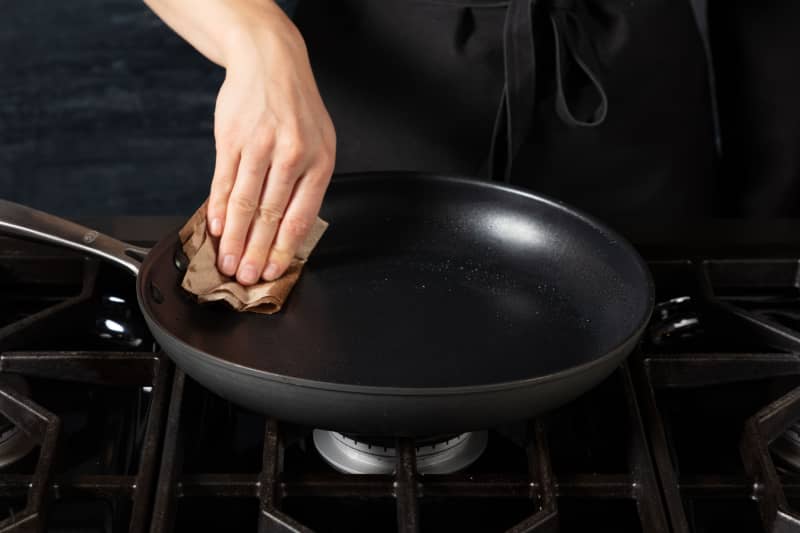
Many manufacturers suggest seasoning their nonstick skillets—much like we do with cast-iron skillets—by warming them, rubbing a little oil into the surface, and then wiping out the excess. Do this when you purchase a new pan and anytime you notice that your nonstick skillet is getting a little sticky.
2. Simmer away cooked-on food
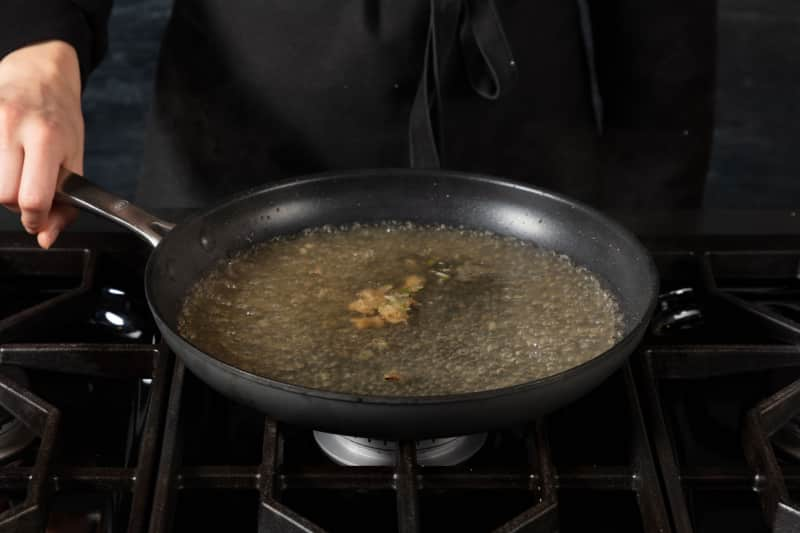
If you accidentally burn food in your nonstick skillet, simply fill it with water and bring it to a gentle simmer on the stovetop. The cooked-on food will come right up. This technique works with all cookware.
3. Know when and when not to use nonstick
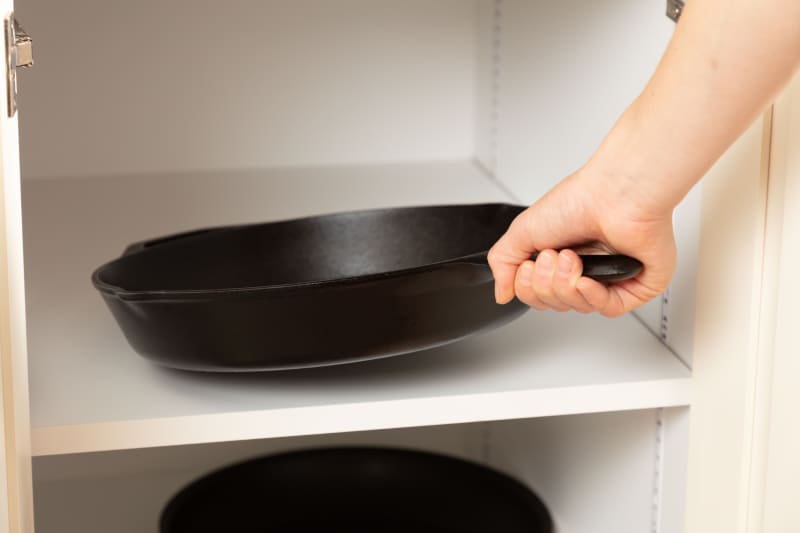
If you really want to crank up the heat and get the kind of good, hard sear that produces the fond that’s essential for pan sauces, put down the nonstick skillet and use a stainless-steel, cast-iron, or carbon-steel skillet instead. We also suggest using light-colored stainless pans when browning butter, toasting nuts or bread crumbs, or any other time you need to gauge subtle color changes.
THE DON'TS
1. Don’t use metal utensils

Nonstick coatings scratch easily. Regular wooden spoons and silicone spatulas are gentle enough to use, but make sure you’re using special nonstick-safe slotted spatulas and whisks. Never cut in a nonstick pan and don’t stack them without a soft buffer between them, such as a cloth, paper towel, or paper plate.
2. Don’t put it in the dishwasher
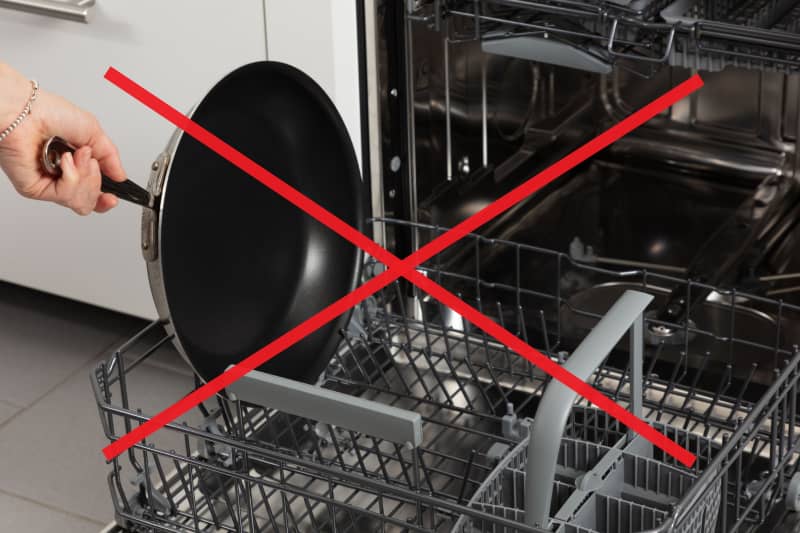
Many manufacturers say that their pans are dishwasher-safe but we still don’t recommend washing nonstick cookware in the dishwasher. Dishwasher detergents are harsher than regular dish soap and can wear down the coating, and the pan can scratch if jostled against other dishes. Don’t use scouring pads or abrasive cleansers on the cooking surface either.
3. Don’t use aerosol cooking spray
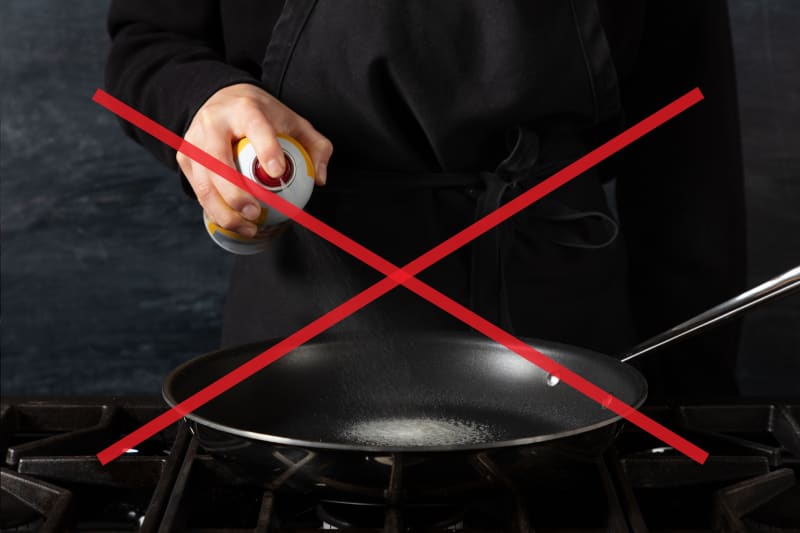
Nonstick cooking sprays, including Pam, can create invisible buildup on the pan’s surface and form a barrier between your food and the nonstick surface. Why? Most contain an emulsifying agent, lecithin, that clings to PTFE, builds up, and becomes sticky. If you want a very fine coating of oil, add a small amount of oil and distribute it with a paper towel or use a spray that doesn’t contain lecithin.
4. Don’t preheat an empty pan or put an empty pan under the broiler
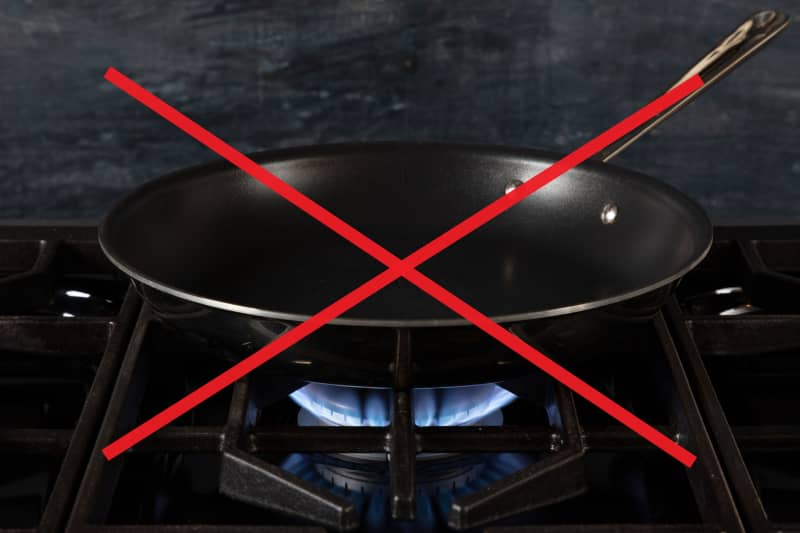
Nonstick coatings made from polytetrafluoroethylene (PTFE) can break down and release noxious fumes if heated above 500 degrees, which can happen quickly when pans are heated empty or placed under the intense, direct heat of the broiler. We always add oil or butter when preheating nonstick skillets on the stovetop because these fats smoke at lower temperatures (usually around 350 or 400 degrees, depending on the type of fat), and provide a visual cue that the pan is getting dangerously hot.
5. Don’t put cold water in a hot pan
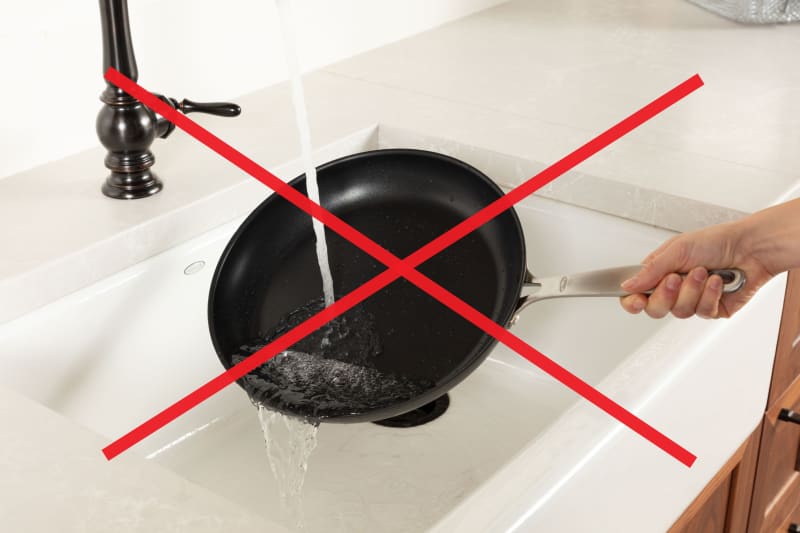
The sudden temperature change—from very hot to even moderately cold—can cause the metal to warp and distort. A badly damaged pan is hard to cook in. Oil runs off to the side, food browns unevenly, and the pan will rock on the stovetop and will be especially hard (or even impossible) to use on glass-topped electric and induction cooktops.
